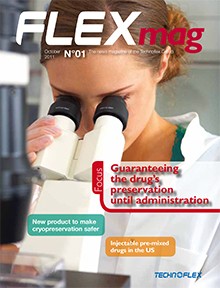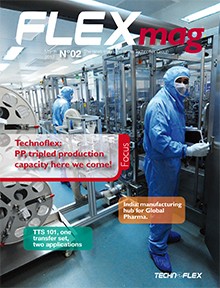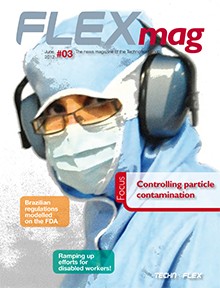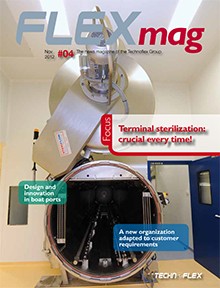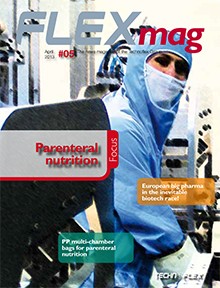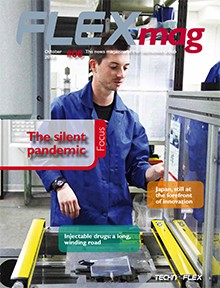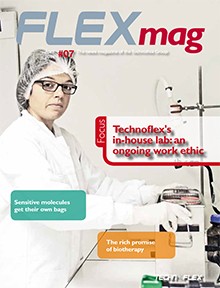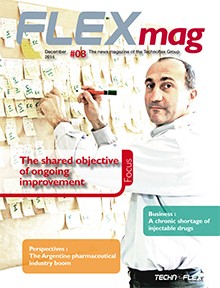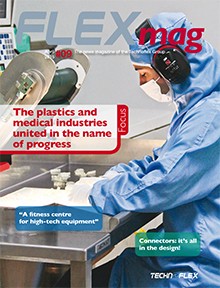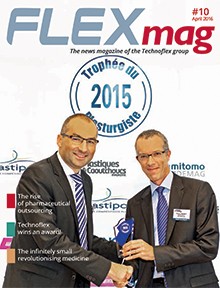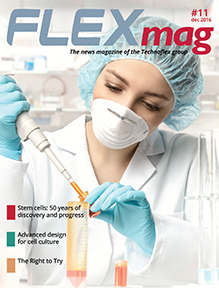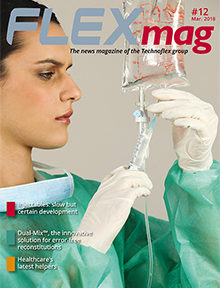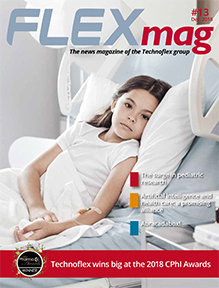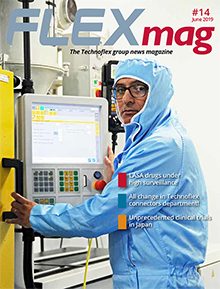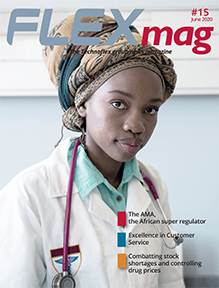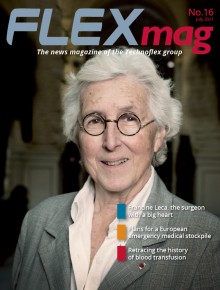Multi-chamber bags for parenteral nutrition
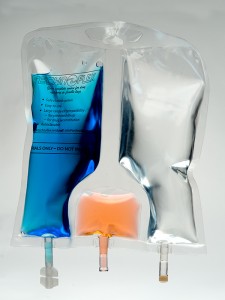 The multi-chamber bags developed by Technoflex are made of a polypropylene-based film with a high oxygen barrier. This particular property protects amino acids against oxidation, the main factor in their degradation.
The multi-chamber bags developed by Technoflex are made of a polypropylene-based film with a high oxygen barrier. This particular property protects amino acids against oxidation, the main factor in their degradation.
The bags are compartmentalized into two or three chambers containing macronutrients in the form of binary mixtures (glucose and amino acids) or ternary mixtures (lipids, amino acids and glucose). These standard mixtures are suitable for the majority of patients. To prevent the inevitable interactions between some of these macronutrients, peelable welds (removable thermo-welds) are put in place to separate them from each other. In order to reconstitute the mixture, the welds are simply squeezed by hand to break them.
Multi-chamber bags for parenteral nutrition offer many advantages. They enhance patient safety as they reduce handling and thus the risks of contamination of the nutritional mixture. They bring down the waiting time linked to the opening hours of manufacturing units (the solutions are prepared in hospital pharmacies). The drugs can therefore be dispensed by healthcare staff as soon as they are prescribed. The bags also come in more extensive ranges with simplified storage conditions. All these advantages have allowed the widespread use of these ready-to-use parenteral nutrition bags in hospitals.
There remains the issue of micronutrient supplementing (dietary minerals and vitamins). Due to their high level of instability, these components have to be added just before administration. This operation can sometimes be forgotten. A way of remedying this problem would be to create a new chamber dedicated to dietary minerals. But the main difficulty is the dosage form of the vitamins. Packaged as lyophilisates in bottles, they have to be used within 24 hours following reconstitution. So an extension of the “all in one” concept to include vitamins and dietary minerals would be a significant improvement. The recent R&D developments at Technoflex have resulted in the adaptation of the TTS101 transfer set: welded directly on the bag, it is used to fix the vitamin bottle securely. This system facilitates the reconstitution of the vitamin solution when the mixture is used. The aim is improve the safety of parenteral nutrition. It could be used by healthcare departments in hospitals, but also in HAH*. In this respect the handling operations would be vastly reduced and the addition of micronutrients would no longer be forgotten.
Sylvie Ponlot
*Healthcare at Home



